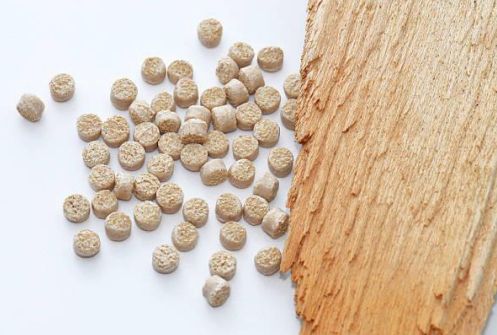
Innovation for Eco-friendly and plant kingdom based Polymers to substitute volatile organic chemical compounds for Sustainability : Smita Singh, Research Scholar, BIT Mesra, Ranchi & S.K. Singh, Ex-Scientist, DRDO and Chief Executive Offier, Gramin Samridhi Foundation
Some common chemicals found in wide prevalent commercial adhesives include Volatile organic compounds (VOCs), which can contribute to air pollution and respiratory problems. Formaldehyde, a carcinogen and irritant that may cause eye, nose, and throat irritation, as well as asthma and allergic reactions.
Today, wood adhesives are mainly prepared from petroleum-based polymers. There is an ambition to decrease the utilization of petroleum-based raw materials and introduce bio-based polymers instead. However, the utilization of bio-based polymers is often limited due to insufficient properties in terms of water resistance or heat resistance. To compete, the bio-based polymers therefore need to match the properties of conventional adhesives and/or introduce new valuable properties, preferably without any cost increase.
Protein, tannin, lignin, and polysaccharides are examples of interesting bio-based polymers that have been suggested for wood adhesives. Proteins from milk, blood and soybean have been used as wood adhesives for thousands of years. However, bio-based polymers were replaced by polymers derived from fossil resources due to enhanced properties and favorable cost development. Extensive research is now being conducted to improve bonding performance and water resistance of soy protein with the intention of utilizing this raw material again.
The intrinsic property of Bioenzym as a constituent for creating Bio-Polymers for extending adhesive bonding quality demand extensive research and innovation with a goal to replace chemical based adhesive and binders.
The abundance of agricultural waste along with Bio-based polymers has a potential to generate wealth from rural economy at least for indoor applications at a fraction of cost where water resistivity is not an issue.
Construction is a large, allied sector that contributes significantly to the gross economy of the nation. From the past many years cement and concrete have been the primary requirements for construction. Cement production is a substantial source of CO2 emissions, contributing approximately 7-8% of global CO2 emissions. On average, the production of one ton of cement releases about one ton of CO2 into the atmosphere, mainly due to the calcination of limestone and the burning of fossil fuels. Cement is not bio degradable and it is a potential hazard for the environment. Once introduced in binding formulation as concrete as an alternative to commercial ones, they can diminish the hazard caused by CO2 emissions from cement and concrete causing severe environmental hazard.
However, as such only starch as binders are weaker than concrete and cement and to render them useful we either need to crosslink or graft them with acrylic monomers. Grafting gives us bigger advantage as it allows to modulate the properties in terms of percentage grafting . Hence grafted starch based concrete are inherently safer alternatives being a gift to humanity to fulfill the construction requirements and it can be explord further. Starch based construction materials and binders are yet not well explored.
Gramin Samridhi Foundation along with other stakeholders are working on innovation and applied Research to use readily available ecofriendly agricultural waste products along with bio polymers generated adhesive and binders as engineering interventions for design of eco-friendly Smart home in the larger interest of environment.







